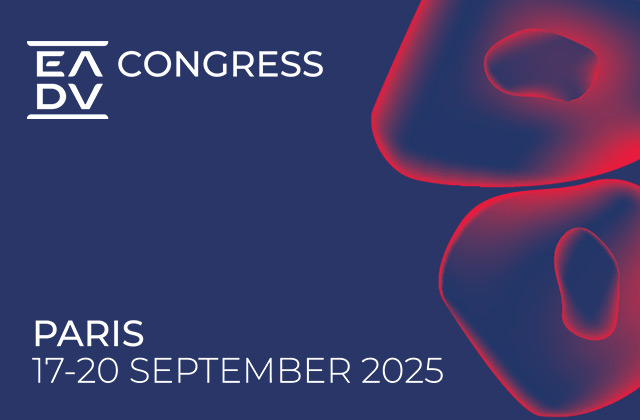
In a previous paper, Key Challenges in CNS Development & Commercialization, we introduced six attributes of the CNS therapeutic area that make it especially challenging for biopharma companies who are developing and commercializing therapies in the space. That article provided an overview for each of the six while also highlighting their implications for biopharma decision makers.
In this article, we begin the process of diving into each challenge individually. We’ll explore some additional insights and review recommendations for biopharma companies. First on the list: the heterogeneous nature of CNS as a disease category.
CNS is a broad umbrella term covering a wide variety of diseases that can have different symptomatologies, etiologies, prevalence levels, patient populations, and treating specialists. Think about the massive differences between post-traumatic stress disorder, Parkinson’s disease, and spinal muscular atrophy (SMA). They’re different in nearly every way but are all lumped under the umbrella of “CNS.” CNS diseases can be broadly grouped into categories such as psychiatric, neurodegenerative, and neurodevelopmental. However, the categories show considerable overlap, contributing to the challenge of characterizing the CNS landscape.
As mentioned in our previous paper, this confusing reality presents unique challenges for companies that want to be CNS portfolio companies:
- Development perspective – The heterogeneity even within a single disease category can make it very difficult to develop a single therapeutic that has potential in multiple diseases.
- Commercial perspective – There may be minimal synergies across CNS indications. A company developing simultaneously in postpartum depression and schizophrenia will have to engage with different stakeholders and use fundamentally different approaches, even though both indications are in the psychiatric space. By contrast, a company focused on the cardiovascular space can usually leverage the same KOL relationships and customer-facing organizations across a wide range of indications.
Recommendations for Biopharma Companies
Given the unique nature of CNS as a therapeutic area, there are a few key recommendations that emerging biopharma companies—or more established companies that are entering the CNS space—should keep in mind. Below, let’s review each at a high level.
Clearly define a corporate vision and strategy in CNS.
It’s important for any biopharma company in the space to clearly articulate its chosen “identity.” This is essential to driving focus and helping the company zero in on market niches within which it can build a competitive advantage. For example, a company could choose to focus on a specific indication in CNS, a platform technology, a specific modality (like gene therapy), or something else.
A platform or modality focus could offer some breadth because of its potential applicability across various diseases. Denali Therapeutics’ platform technology for shuttling therapies across the blood-brain barrier is one example. Sarepta’s focus on muscular dystrophies is both an example of a deeper, indication-based strategy (focus on muscular dystrophies) as well as a modality focus (RNA and gene therapy).
A company should also consider how its CNS assets fits with other components of its overall portfolio, if applicable. The goal would be to determine if it’s more advantageous to focus solely on CNS or if it’s better to generate synergies between CNS and other portfolio areas. Given high risks in CNS, some manufacturers may consider how non-CNS portfolio priorities can help support more high risk CNS development and commercialization efforts. Biogen recently announced that they will be employing this type of risk mitigation strategy in the future. In addition, Amylyx just acquired a GLP1 asset to supplement its neurodegenerative disease portfolio, which took a hit with the failure of the confirmatory trial for Relyvrio and its subsequent removal from the market.
Look for commonalities and adjacencies across CNS therapeutic areas (that are not related to a common target or MOA).
Traditionally, manufacturers have sought to identify targets and MoAs that have applicability across a broad range of diseases to enable a “pipeline in a program” approach that maximizes the efficiency of R&D and commercial efforts. Given the heterogeneity in CNS, that approach may be difficult or impossible. This was demonstrated most recently by data from Annovis on buntanetap, which was heralded as a “platform drug” for neurodegenerative disease based on its MoA but failed to meet its primary endpoint in either of its recent readouts.
However, there are still opportunities to define synergistic CNS indications based on other criteria, such as:
- Symptomatology – For example, a drug that impacts psychosis associated with schizophrenia is likely to do so as well for psychosis associated with Alzheimer’s disease (e.g., mAChR agonists developed by Karuna Therapeutics)
- Etiology – A modality or platform-focused company (such as a gene therapy company like Ionis, Sarepta, or Passage Bio) may benefit from focusing on CNS diseases with monogenic etiology, which are more amenable to a gene therapy approach
- Prevalence – Companies that have a stated focus in rare diseases may be able to leverage their experience in executing market development initiatives, building relationships with patients and advocacy groups, and other areas of expertise in rare disease to develop and commercialize successfully across multiple rare CNS indications.
- Call point – CNS disorders can be treated by a wide variety of healthcare providers (HCPs) but there is an opportunity for manufacturers to focus their CNS efforts on diseases treated by a specific HCP type (e.g., neurologists, psychiatrists) to maximize the synergy of customer engagement efforts across disease areas.
Consider a matrixed approach to commercialization that matches the unique needs of each therapeutic area and considers the organization’s capabilities and willingness to invest.
When building and optimizing a CNS portfolio, a company should take a systematic and matrixed approach to guide its strategy and investment decisions. For each indication of interest, company leaders should assess the following areas:
| Market Factors | Invest in understanding the unique patient journey, unmet needs, and stakeholder roles and responsibilities; this is especially critical in CNS, where diseases with similar clinical manifestations may have very different patient journeys (as an example, schizophrenia and dementia-related psychosis) |
| Commercialization Requirements | Define the overall strategy, capabilities, and resources that will be essential to successful commercialization |
| Alignment with Corporate Vision | Consider the organization’s vision, willingness, and ability to invest the resources required; IP considerations (e.g., existing partnerships / agreements, licensing options, etc.) also play a key role |
It’s important to note that the considerations above are not unique to CNS companies. However, they take on added relevance because of the heterogeneity present within the market space. Based on them, leaders should decide which assets within a CNS portfolio should be commercialized in-house vs. those that would most likely benefit from a commercial partnership or full out-licensing.
Ionis provides a real-life example of a company with a matrixed commercialization approach. Its amyotrophic lateral sclerosis (ALS) asset, Qalsody® (and others) are partnered. However, it wholly owns and executes commercialization of its ATTRv-polyneuropathy asset, Wainua™.
To further illustrate the point, we can consider this simplified, hypothetical example: A small, resource constrained CNS company that is developing assets in both Alzheimer’s disease and Rett syndrome may choose to partner the Alzheimer’s asset due to the substantial investment required to commercialize in a very large market with a substantial primary care presence. However, it may choose to commercialize the Rett asset itself due the smaller, specialist-driven market that is concentrated across centers of excellence.
Coming Next
Individual CNS diseases are often heterogeneous in presentation and can fall on a spectrum. In addition, many diseases lack definitive tools for diagnosis. As a result, patients often experience delays in diagnosis and/or misdiagnosis before finally zeroing in on the disease. For biopharma companies, this makes it more difficult to find suitable patients for clinical trial recruitment and more. In the next installment, we’ll address in more detail the challenge of finding patients.






